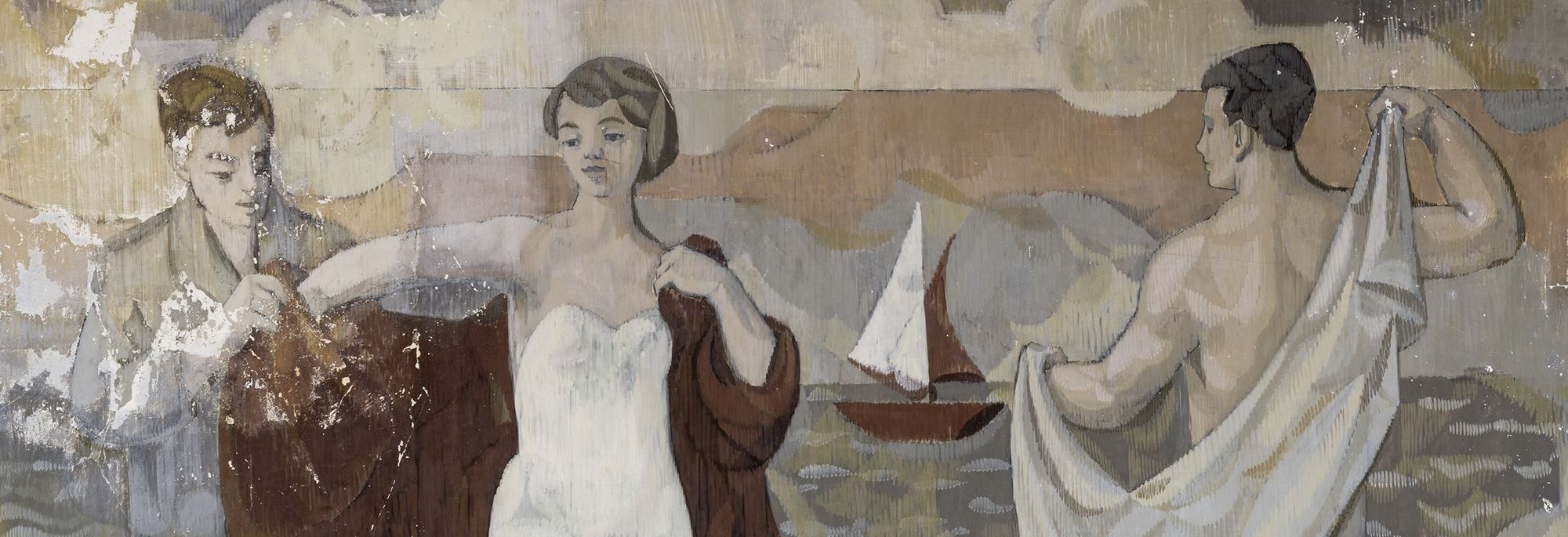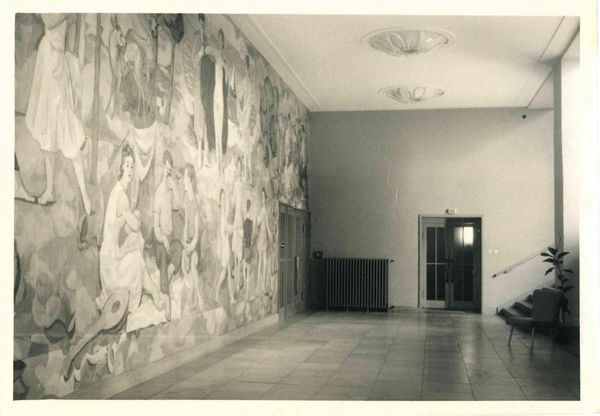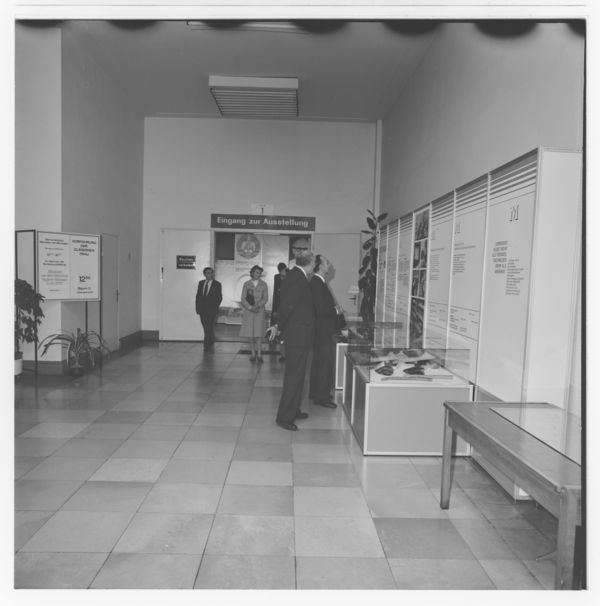A Mural by Gerhard Richter makes a Comeback

The artistic career of Gerhard Richter, born in 1932, began at the Dresden Academy of Fine Arts. Already during his training, the talented student was greatly encouraged by his teacher Heinz Lohmar (1900 – 1976). After graduating and during his time as a doctoral candidate, Richter had the opportunity to carry out a number of mural commissions in Dresden.
In 1956, the celebrations marking the 750th anniversary of the city of Dresden enabled the Deutsches Hygiene-Museum to renovate and redesign a number of its rooms, some of which still bore the traces of wartime damage. It was on that occasion that the Museum and the Academy of Fine Arts decided that Gerhard Richter should execute a mural in the south foyer stairwell as his diploma project. The painting entitled Lebensfreude [Joie de Vivre] covered the entire wall, i.e. an area of some 60 square metres.
For his monumental mural, Richter recreated a summer idyll that captured the hope of a happy and peaceful future in the young socialist society. By the same token, the adumbrated landscapes and figural scenes also referenced motifs from the imagery of European art history, something with which he would have been most familiar due to his studies. Take for instance the young couple featured on the far left-hand side, reminiscent of traditional depictions of Adam and Eve in the Garden of Eden. The bathing scene in the centre, now partially uncovered once again, clearly refers to Sandro Botticelli’s The Birth of Venus. The back of the male nude depicted in this scene is indicative, with its delicate technique, of the solid training that Richter would have enjoyed at the Dresden Academy. Below the bathing scene, he placed a group of four dancers that bear similarities to Henri Matisse’s paintings La Danse and Le Bonheur de Vivre [The Joy of Life]. The group of three youths seated in the grass can also be seen as citing another art-historical work – in this instance, Richter is clearly referencing Édouard Manet’s Le Déjeuner sur l’Herbe [The Luncheon on the Grass]. The parents with the child in the top right are evocative of Christian depictions of the Holy Family, transposed here to the present with the motifs of a tractor and a factory chimney. And the dove no longer refers to the Holy Ghost, but to Pablo Picasso’s ‘dove of peace’, for which the artist received the World Peace Prize in 1955 (see the detailed essays by Kerstin Küster and Sandra Mühlenberend in the publication Gerhard Richter „Lebensfreude“, 1956. Teilfreilegung eines verschwundenen Wandbildes, Deutsches Hygiene-Museum 2025).
In the magazine Farbe und Raum [Colour and Space] from 1956, Richter described how he opted for a decorative interior design that incorporated the colour scheme of the other wall and ceiling surfaces in the foyer. In the article, Richter also explained his approach. His design draft was transferred onto the wall using a grid of squares, all to scale. The horizontal and vertical lines used to divide the wall into various sections are still visible to this day. This method allowed Richter to rework the design while painting:
»You work more creatively, as it were; you’re able to modify, add or omit things as the space demands, and you retain a certain originality and freshness; ...«
Gerhard Richter, 1956
The stairwell foyer was redesigned in 1979 and Gerhard Richter’s mural was painted over entirely during that process. Indeed, the Museum had been classified as an important cultural monument with regard to heritage conservation. As a result, Wilhelm Kreis’s original architectural concept was revived, with the additions and alterations made in the post-war period subjected to review. The management of the former Institute for the Preservation of Historical Monuments concluded that Richter’s mural had been ‘a student project and of no artistic significance’ and could therefore be painted over. The museum management added that Richter ‘had also committed Republikflucht[desertion from the Republic]’ in 1961.
It was not until 1994 that staff at the Museum began to take a closer look once again at the history of Gerhard Richter’s mural while conducting research for the special exhibition Körperbilder – Menschenbilder. Paintings, Drawings and Sculptures from Saxony from 1945 to 1994. Preliminary investigations revealed that the painting was still in place; however, Richter did not agree to the Museum’s 1994 request to expose the mural once again.
In the end, the mural was partially uncovered in 2023 – 2025 in time for the special exhibition VEB Museum. The Deutsches Hygiene-Museum in the GDR. Gerhard Richter had agreed to the project as part of a scientific restoration and a reclassification within the Museum’s timeline. It provides insights into historical strata and processes that continue to shape the Museum to this day.
From a technical point of view, the partial uncovering of the mural posed all manner of challenges for the conservation team. In 1979, a grey-tinted alkyd resin had been applied directly to the unprotected layer of paint as an adhesive for the latex layers that were subsequently affixed. Numerous other coats of paint followed over the decades.
The restoration work itself was carried out inside an airtight enclosure so as not to put visitors to the Museum at risk. The solvent vapours produced were filtered and lastingly extracted from the enclosure to protect the conservators. What’s more, the restoration team was required to work with respirators.
With the exception of the top left corner, where there is water damage to the concrete, almost 19 m² of the wall surface was exposed. In that one area, the last remnants of alkyd resin remain affixed to the layer of paint. Due to the specific nature of the damage, a loss of the original substance during the uncovering process could not be completely ruled out.
It also became apparent during the uncovering work that the section of mural chosen was generally in a very good state of preservation. This is all the more surprising given that the wall and the mural entirely accessible and unprotected for over 23 years. A few historical imperfections and partial fissures in the support medium notwithstanding, the uncovered section is almost undamaged. For this reason, it was decided during the final phase of the project not to carry out any retouching or tinting work, but to present the mural to the Museum’s visitors in as authentic a state as possible for the period 1956 to 1979.


